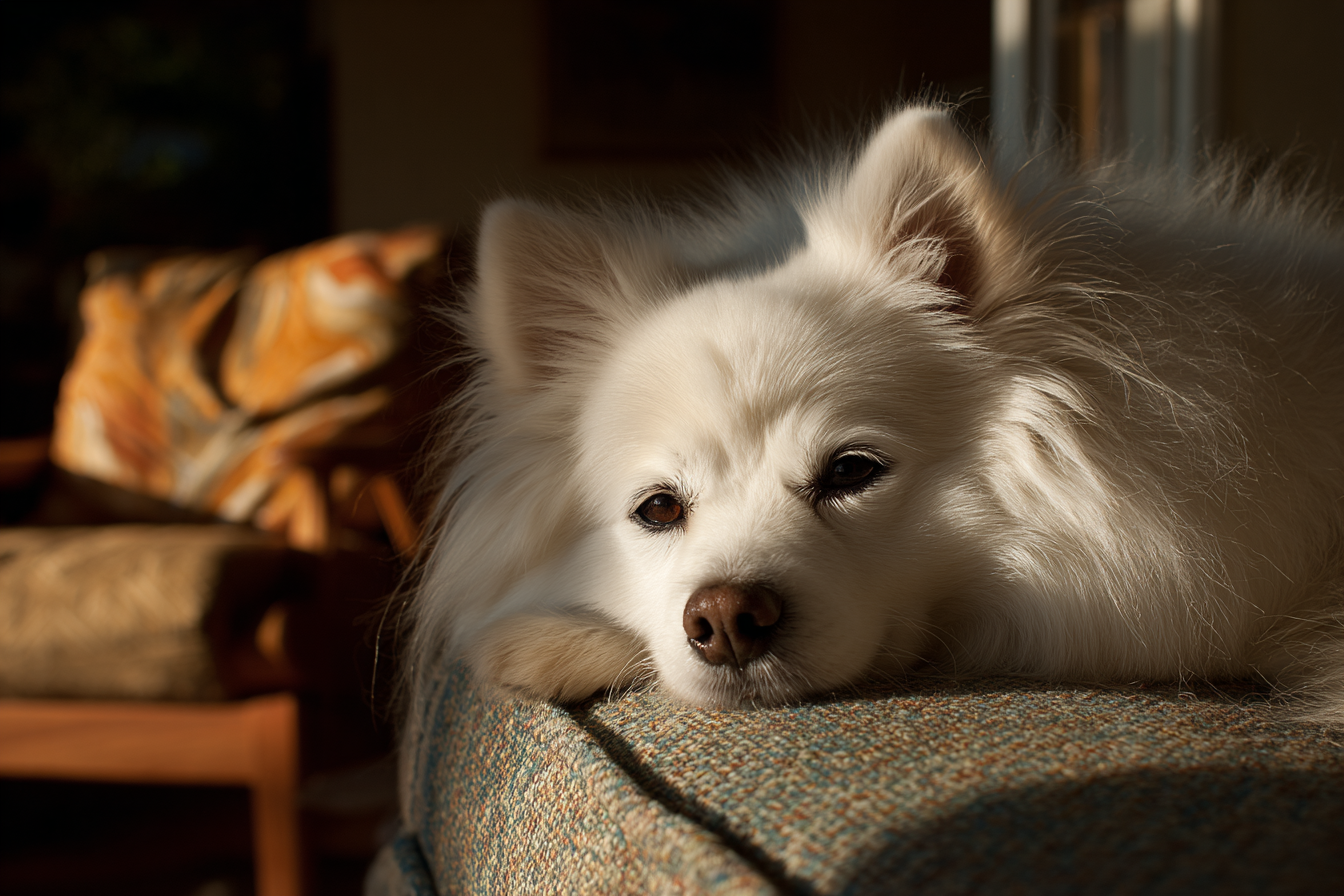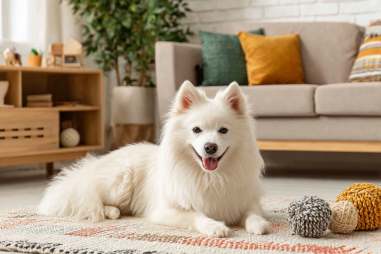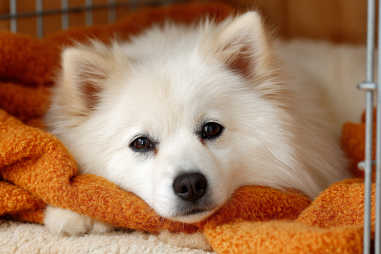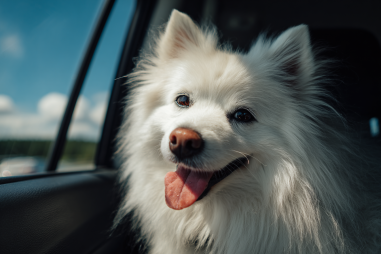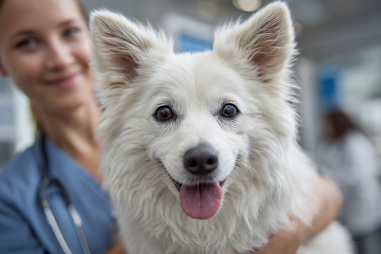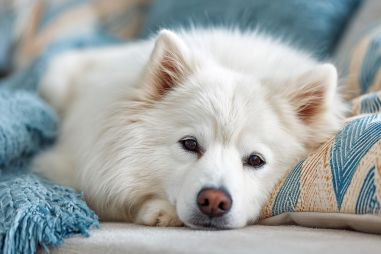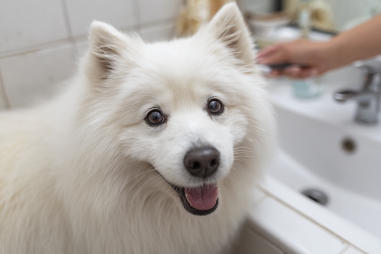Welcoming an American Eskimo Dog into your life means bringing home a lively, intelligent, and affectionate companion. Like all pets, they have a unique lifespan and aging process that owners should understand to provide the best care throughout their lives. Knowing what to expect as your American Eskimo Dog grows older not only helps in recognizing the signs of aging but also in making the necessary adjustments to their routine, diet, and health care. This guide dives deep into the typical lifespan of this breed, explores common aging signs, and offers practical advice on caring for your senior Eskie with love and respect.
Average Lifespan of the Breed
American Eskimo Dogs, often affectionately called “Eskie,” typically have a lifespan ranging from 12 to 15 years. This longevity is relatively good compared to many other breeds of similar size, thanks to their generally healthy genetics and active nature. However, several factors can influence the exact length of their life, including genetics, diet, environment, and the level of care they receive throughout their lifetime.
Small to medium-sized breeds like the American Eskimo Dog often live longer than larger breeds, but as with all dogs, maintaining regular veterinary checkups and a healthy lifestyle can contribute to a longer, happier life. It’s also important to recognize that within this average, some Eskies may live shorter lives due to underlying health issues, while others may surpass the average with optimal care.
Signs of Aging in American Eskimo Dogs
As your Eskie moves into its senior years, certain signs of aging will begin to appear. Recognizing these changes early helps you adapt their care to keep them comfortable and healthy. Common signs of aging in American Eskimo Dogs include:
- Slowing down: Your dog might show less enthusiasm for long walks or intense play sessions and may spend more time resting.
- Gray hair: It is common to see gray or white hair start to develop around the muzzle and eyes.
- Changes in vision and hearing: Some Eskies experience a decline in sight or hearing, which can affect their behavior and responsiveness.
- Stiffness or signs of arthritis: Joint pain or stiffness can become noticeable, especially after resting or in colder weather.
- Weight changes: Weight loss or gain due to decreased activity or metabolism changes.
- Dental issues: Dental health often deteriorates with age, possibly leading to bad breath or difficulty eating.
- Behavioral changes: Older dogs may become more withdrawn, anxious, or confused, which could indicate cognitive decline or discomfort.
Monitoring these signs helps you detect when your Eskie might need extra attention or specialized care tailored to their aging body.
Adjusting Care for Senior Dogs
Adjusting your American Eskimo Dog’s care routine as they age is essential to ensuring they live out their golden years comfortably. Senior Eskies benefit from more gentle handling and regular health assessments to catch any emerging issues early. Some care adjustments include:
- Regular vet visits: Increase the frequency of veterinary checkups to twice a year to monitor health and catch problems early.
- Pain management: If your dog begins showing signs of arthritis or discomfort, your vet might recommend medication or supplements such as glucosamine for joint support.
- Comfortable living spaces: Provide soft bedding to cushion aging joints and create easily accessible resting spots to avoid unnecessary climbing or jumping.
- Mental stimulation: Continue engaging your dog with puzzle toys and gentle training to keep their mind sharp and happy.
- Hydration encouragement: Older dogs sometimes drink less water, so offer fresh water frequently and consider adding wet food to their diet.
Diet and Exercise Modifications
Proper diet and exercise are cornerstone elements that help manage the natural aging process of your American Eskimo Dog. As metabolism slows down, caloric needs decrease, making it crucial to adjust their diet to avoid obesity, which can exacerbate health issues like arthritis and diabetes.
Diet considerations for senior Eskies include:
- Switching to a high-quality senior dog food formulated for their age, with appropriate levels of protein, fat, vitamins, and minerals.
- Including supplements such as omega-3 fatty acids to support inflammation reduction and joint health.
- Feeding smaller, more frequent meals to aid digestion and maintain steady energy levels.
Exercise should be tailored to your dog’s physical ability. Older Eskies often enjoy short but regular walks, gentle play sessions, and swimming, which is a low-impact way to maintain muscle tone and cardiovascular health without putting stress on the joints. Always avoid strenuous or high-impact activities that could strain older muscles and joints.
Monitoring Health and Wellness
Keeping a close eye on your American Eskimo Dog’s health is vital as they age. In addition to the routine vet visits, be vigilant about daily wellness checks at home. Look for signs such as changes in appetite, drinking habits, urination or bowel movements, breathing patterns, or mobility issues.
Monitoring your dog’s weight is crucial because either weight gain or loss can be an indicator of underlying health problems. Regular dental checks are recommended since oral health can significantly impact overall well-being. If you notice bad breath, inflamed gums, or difficulty eating, consult your vet promptly.
Some health issues common in older Eskies include:
- Arthritis and joint degeneration
- Heart disease
- Kidney issues
- Diabetes
- Cognitive dysfunction syndrome (doggie dementia)
Early recognition and treatment of these conditions can improve your dog’s quality of life significantly.
Enriching Life for Older Dogs
Quality of life is just as important as quantity, especially for older dogs. Enriching your American Eskimo Dog’s life through mental and physical stimulation, social interaction, and comfort can help them remain happy and engaged. Some ideas to enrich your senior Eskie’s life include:
- Gentle playtime with toys that encourage mental engagement without causing tiredness.
- New scent trails or short puzzle games to stimulate cognitive functions.
- Providing companionship, whether from human family members or a calm canine friend.
- Consistent routines that offer predictability and security.
- Massage sessions or gentle grooming to relax muscles and foster bonding.
These activities promote physical health and emotional well-being, reducing stress and anxiety often seen in aging dogs.
Preparing for End-of-Life Care
While it can be difficult to think about, preparing emotionally and practically for your American Eskimo Dog’s end-of-life stage is an important part of responsible pet ownership. Being aware of when your dog’s quality of life is declining will help you make compassionate decisions that prioritize their comfort and dignity.
Signs that your dog may be nearing the end of their life include:
- Severe loss of appetite or weight
- Inability to walk or stand comfortably
- Chronic pain unrelieved by medication
- Withdrawal or loss of interest in favorite activities or surroundings
- Frequent accidents due to incontinence
During this time, keep your dog surrounded by love, warmth, and gentle care. Consult with your veterinarian about palliative or hospice care options to ease their pain and distress. Many pet owners find comfort in ensuring their dog is pain-free, in familiar surroundings, and surrounded by those they love. Being prepared allows you to handle this challenging phase with compassion and grace.
Caring for an American Eskimo Dog throughout their lifespan requires attention, love, and an understanding of their changing needs as they age. By recognizing the signs of aging, adjusting care routines, and providing mental and physical enrichment, you help your Eskie enjoy a vibrant and happy life well into their senior years. Ultimately, your commitment to their well-being ensures that every moment spent together is cherished and full of joy.

